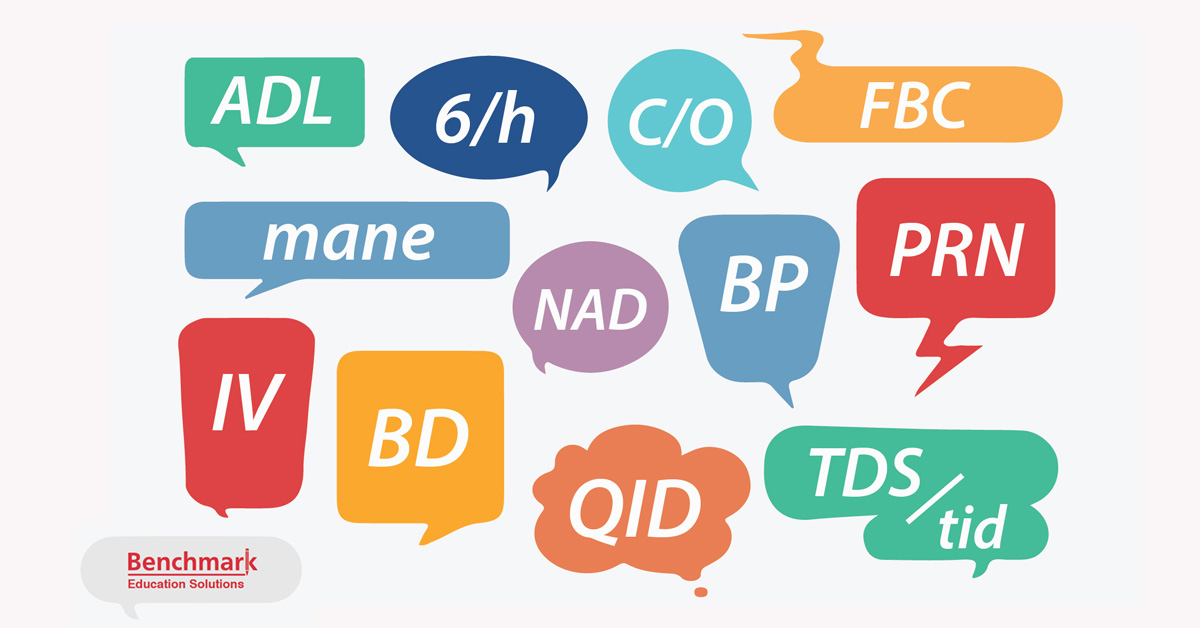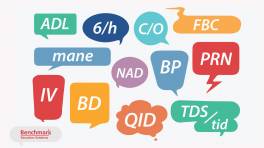

In the medical world, there are a vast number of abbreviations, which, generally make communication easier given the extensive OET terminology involved. In the OET writing task, there are some instances where it is appropriate to use abbreviations and others where it is better to write the information in full. This practice is also evolving over time, both in the medical world and in OET writing. We will outline the key areas to consider to ensure that you use abbreviations effectively!
Table of Contents
1. Will the recipient of your letter understand the abbreviation?
The OET guidance does not provide a definitive list of acceptable and non-acceptable abbreviations and acronyms so it can be difficult to know when to abbreviate. However, it but it does give some guidelines. The abbreviations that would be acceptable to use would basically be those that would be understood by those in the profession of the candidate and that of the recipient of the letter. So it comes down to common sense and judgment.
If you are a GP and the referral letter is written to a consultant, there will be abbreviations that you will both be aware of and vice-versa. However, if you are a consultant, there may be some abbreviations that a GP might not recognize. When writing to a different type of professional , it is important to consider this. If you are writing to a patient or their family, avoiding abbreviations is advisable, as they may not be familiar with technical jargon or workplace technology.
2. Video Guide
3. Can I use abbreviations for medical conditions?
Abbreviations such as BMI and BP are pretty common but the abbreviation of a condition may not be known to the recipient of the letter. Therefore, we recommend writing out medical conditions in full forms. You can also include the acronym in parentheses and use it for subsequent references.
One example of where it is specifically stated not to use an abbreviation is for diabetes. E.g. You are required to write type 2 diabetes rather than NIDDM.
4. Can I use abbreviations for drug administration?
Apart from units of measurement (e.g. mg), it is very important that candidates write drug administration in full. Times of drug administration, for example ‘at night’ should be written rather than nocte; ‘twice a week’ rather than 2/7; and ‘as required’ rather than PRN etc.
Basically, any abbreviations or symbols regarding drug administration which could be confusing in any way must be avoided, so once again use your common sense. It is also important to note that there are some differences between abbreviations used in Australia and England, so writing in full is generally preferable here.
To be clear, we are not suggesting that you avoid abbreviations and acronyms altogether in your OET letters. They are an extremely important element of communication in the medical profession and should be learnt and used. However, your primary focus should be ensuring that your OET letter is easily understood by the recipient, leaving no room for ambiguity.













Regarding the use of brackets,Do the words in brackets count in word limit? Is it correct to write type 2 DM?
Answer to both your questions is ‘yes’.
When I am the nurse and i am writing to some doctor or nurse and need to tell my patients medication can I write TID or BID or some other abbreviations which are in the case notes because they know these?
Can we use acronym AMI instead of acute myocardial infarction when referring a patient to ED?
Yes, you can, but make sure that the recipient of your letter understands such terms. For example, if you are writing to a social worker, they may not know what AMI is.
Educative
Hello, good morning,
Thanks a lot Benchmark for being such a great study platform.
Urine PT -I’m not quite sure what PT in this context mens;please, explain,
Thanks a lot